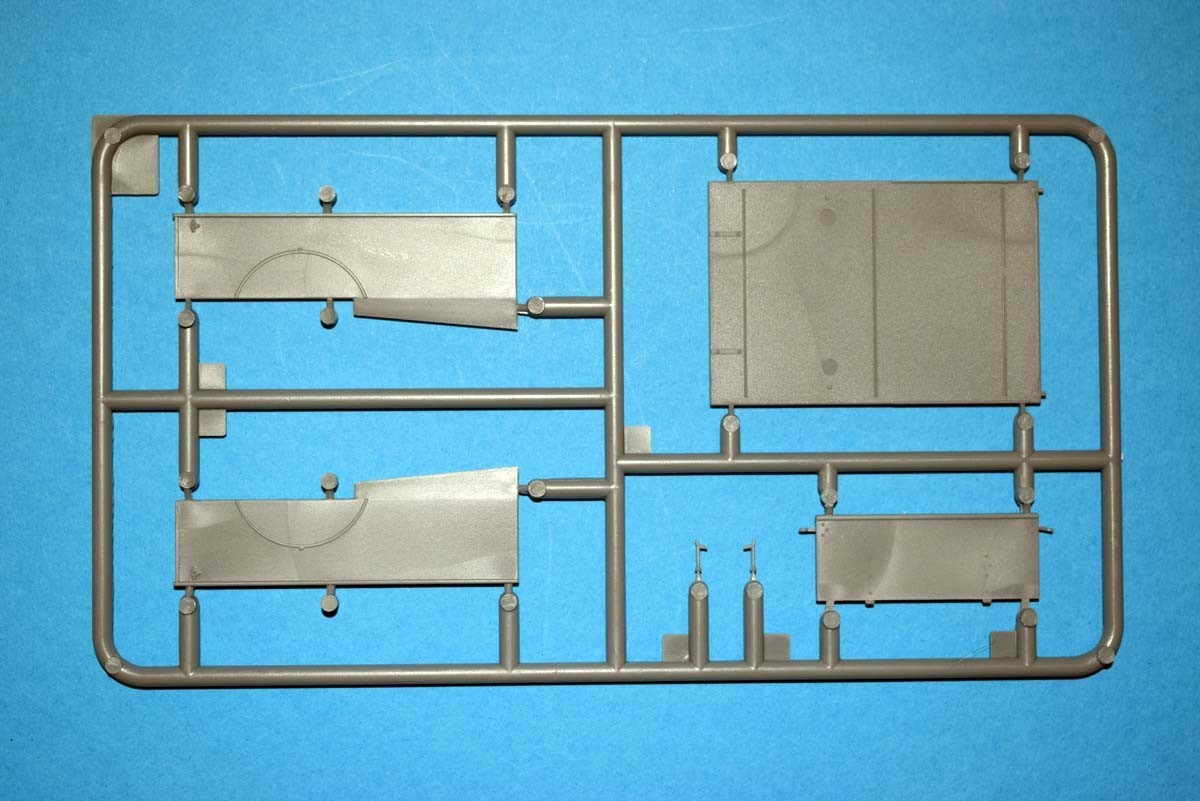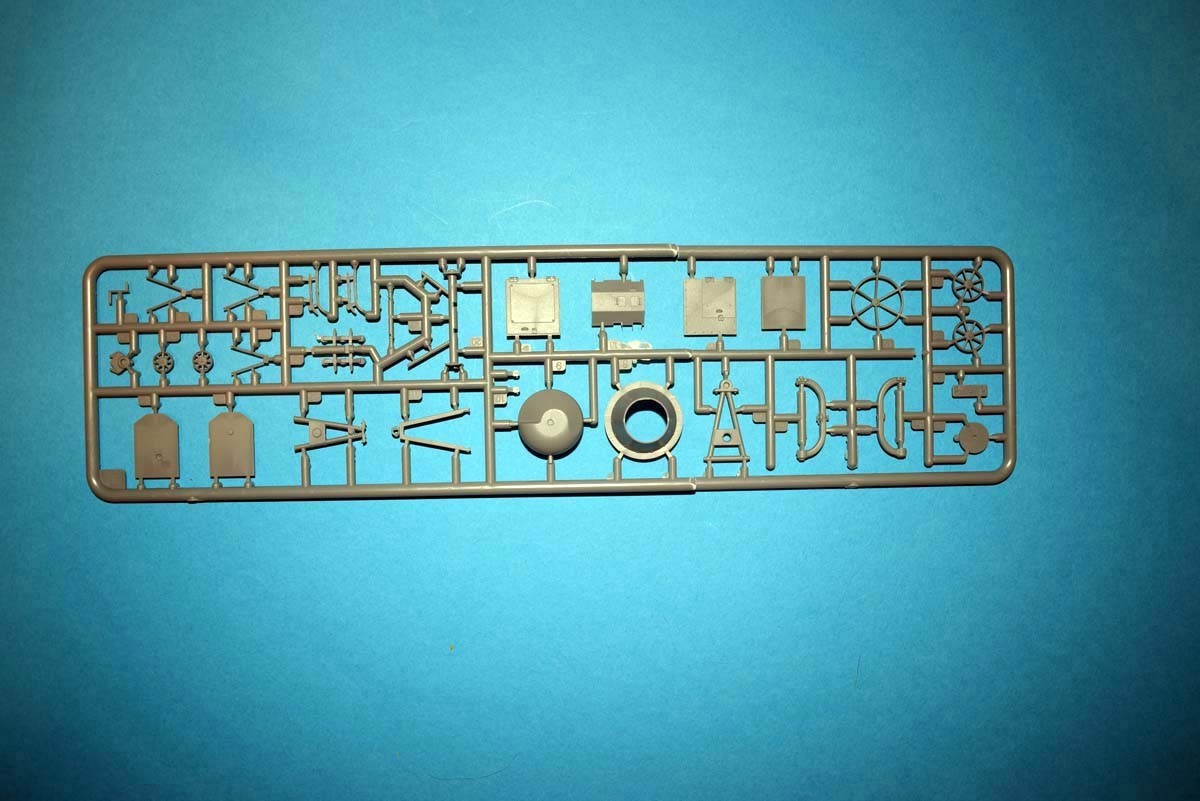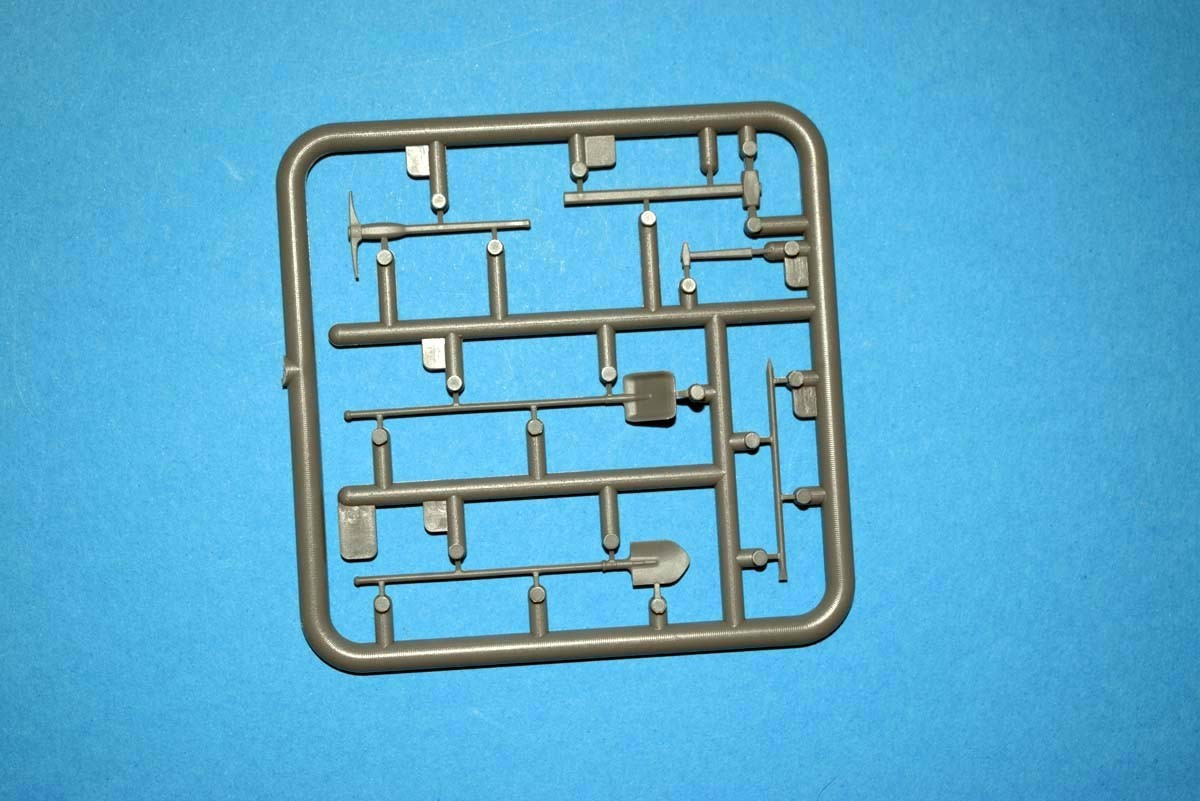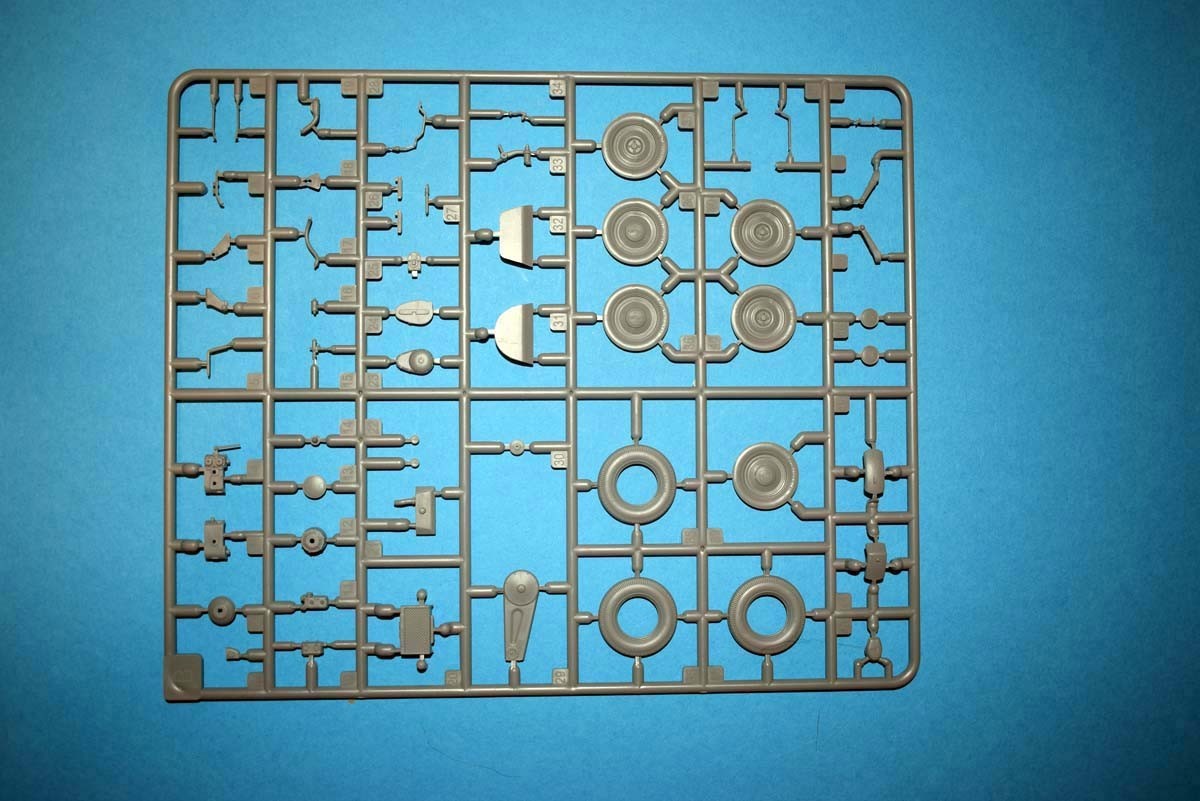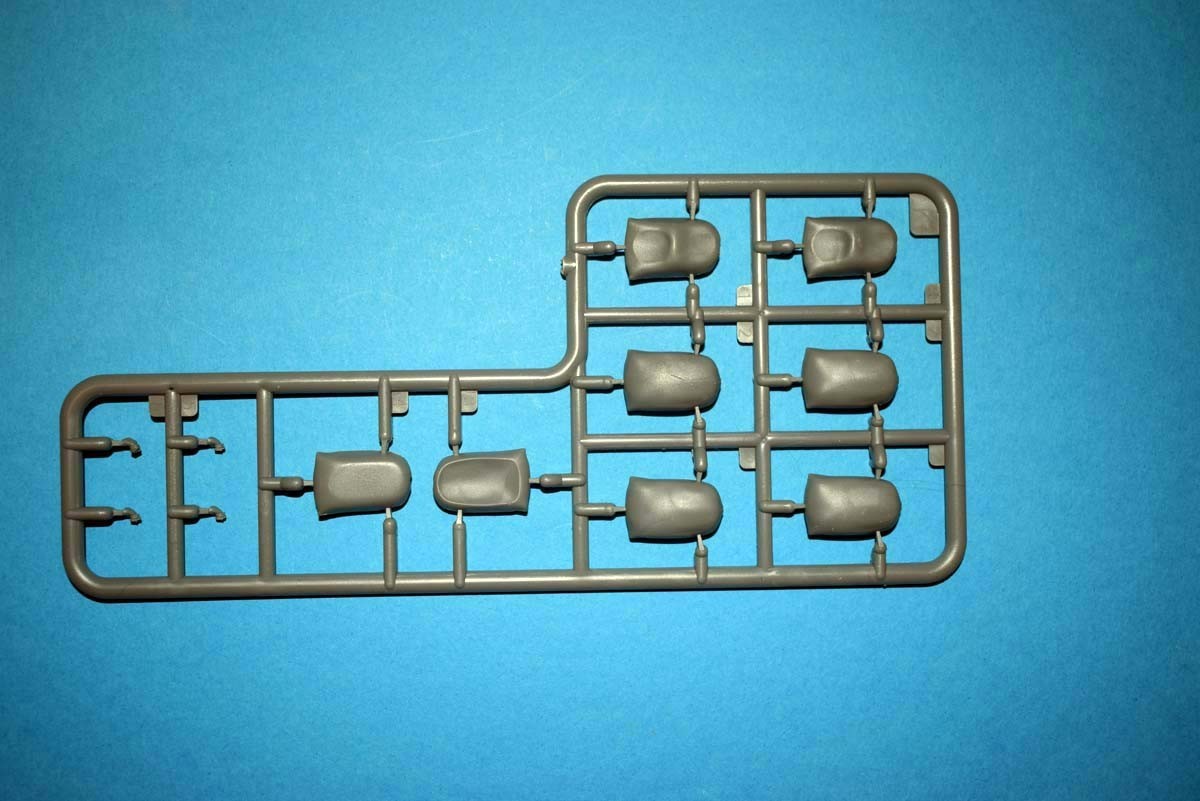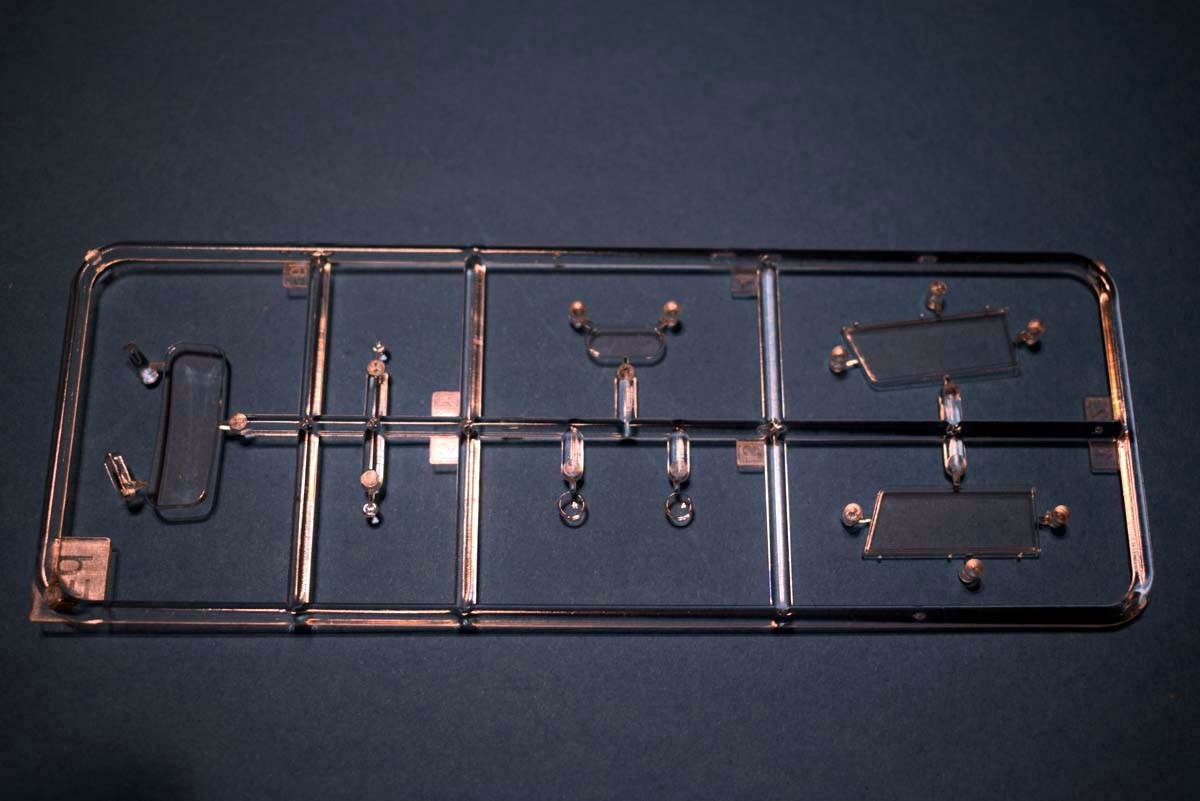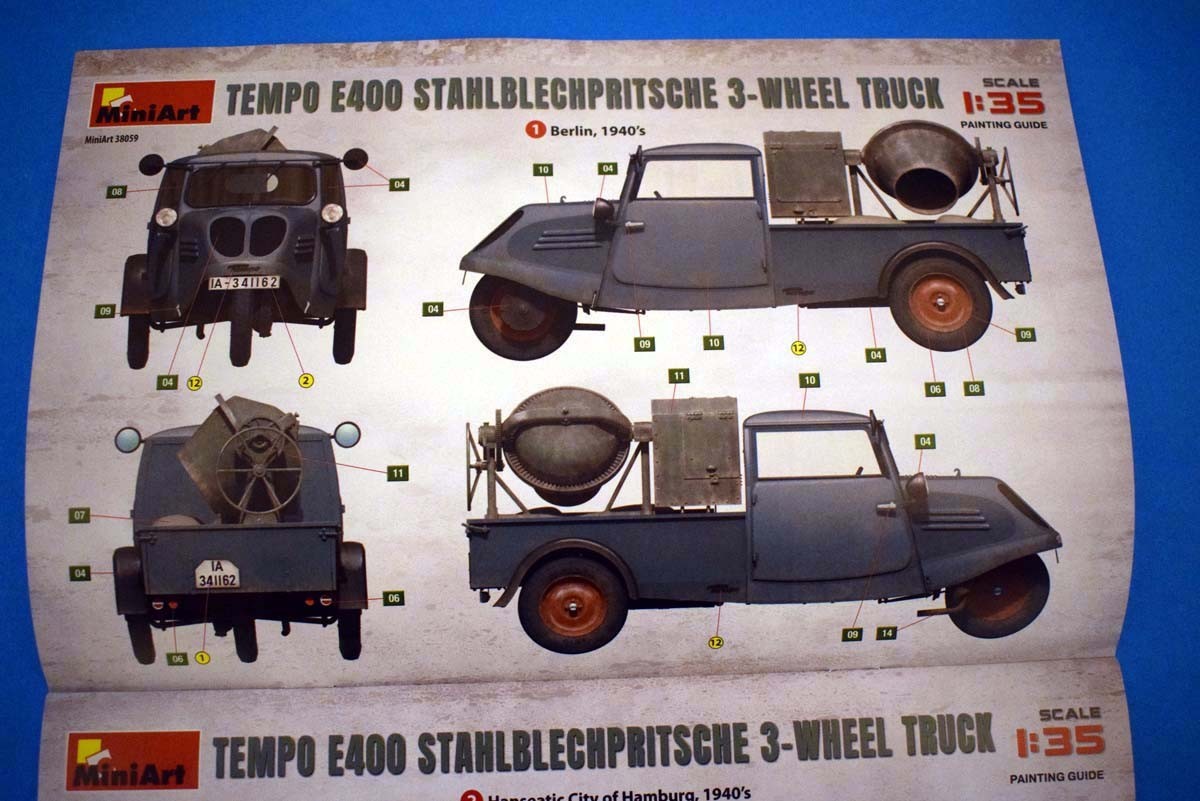
Review
This offering from MiniArt of a Tempo E400 in 1/35th scale adds to a growing list of offerings of the vehicle in various forms. The model arrives in a small cardboard tray, with everything except the instruction booklet packaged in a single sealed bag. The photo etch is protected inside a card envelope in the plastic bag, however the finesse of some of the sprue parts are exposed and are open to potential damage due to the small and delicate nature of some of the parts. My favourite dislike of MiniArt’s packaging is the inclusion of the decal sheet, packaged in a bag with the clear sprue which is then packaged with everything else. The result is I believe a very risk of damage to the decals and decal sheet. Access to the parts on the sprues is good, with minimal clean due to low number of connections. However, the finesse of some elements does mean damage could easily occur during removal.
This model of the E400 can be considered as a combination of four sub assemblies being brought together. Beginning with the cab, you have a good level of detail inside and out. This being a working vehicle, the seats will need roughing up and at the very least dirtying up. The bulkhead between the cab and the engine has good detail of both faces. The battery that is hidden beneath the seat is replicated, but no wiring is present. A very nice touch be MiniArt is that they provide you with information on scratch work that can be done, for adding details such as actuator rods, brakes lines, plus electrical connections from the engine through into the cab. Details such as photo etched windscreen wipers and arms add a nice level of finesse. MiniArt has provided a decal for the instrument cluster inside the vehicle, and the clear parts are of a good thickness which means they do not detract from the look of the vehicle.
The rear axle and chassis which supports the cab and trailer has been detailed despite its simplicity. In addition to MiniArt having provided details on adding brake lines and how they feed along the chassis to the cab are further detailed via photo etched clamp detail to hold them in place accurately. The wheels and tyres of the model, are all injection moulded. You have an option as regards the wheel detail. The tyres themselves have a pleasing level of moulded detail, with a good tread pattern present for a road wheel tyre. The cargo bed of the vehicle is again a simplistic design consisting of side walls, the bed and tail gate. This detail is further enhanced by the addition of photo etched brackets and light cluster assemblies with the lights themselves in clear plastic. This area of the model is finished with the addition of the mud guards, a choice of two number plate designs and photo etched locking detail for the tail gate.
The most intricate area of the model is the engine. This miniscule power pack will likely test your eyes and skill with the tweezers. The plastic model parts will be fairly easy to assemble, with clean up likely to be the biggest headache not because they are badly moulded, but because they are so small, and every part has the sprue connections that need to be cleaned. Tyre and wheel detail are again good and the same as the rear wheels. The detail here is raised to a high standard due to a throttle cable, brake lines and electrical wiring. MiniArt has taken a lot of time to cover the routes of these cables, both on the engine and where they connect to the vehicle body. I suspect but am not sure that further cabling could be replicated on the model. The bonnet of the vehicle is designed to be allowed to be shown open, and the real beauty of this is that it allows complete unrestricted views of the engine and any work and painting detail the modeller imparts. The bonnet itself is nicely shaped, with the engines grilles being supplied in photo etch to give it that look of finesse. The vehicle model itself once all these elements are brought together is finished off with the lights and mirrors, which again include some very tiny photo etched detail, that I could never attempt.
This vehicle has been released as a builders vehicle with a cement mixer in the rear, sacks of cement and what appears to be hardcore with the rear scenario being finished off with a bucket, and tools such as hammers, picks and shovels. MiniArt has provided five finishing options for this release, and these are as follows:
Tempo E400 Stahlblechpritsche 3 - Wheel truck, Berlin 1940s
Tempo E400 Stahlblechpritsche 3 - Wheel truck, Hanseatic City of Hamberg, 1940s
Tempo E400 Stahlblechpritsche 3 - Wheel truck, Munich City District, 1940s
Tempo E400 Stahlblechpritsche 3 - Wheel truck, Organisation Todt, Germany 1940-45
Tempo E400 Stahlblechpritsche 3 - Wheel truck, Reichsbund Deutsche Jagerschaft, WestPreussen, 1940s
Conclusion
Models of civilian vehicles in use by civilians, and government organisations during the periods of the military vehicle we like to replicate, adds visual interest and an idea of scale when figures are not in place. I particularly like that 1/35th scale vehicles of a civilians nature tend to offer more detail than civilian vehicles in larger scales covering cars and the like. This improved detail I believe encourages civilian vehicle modellers to dip their toes into other areas of the hobby. I cannot think of any negatives to this model beyond my concerns about the packaging.
